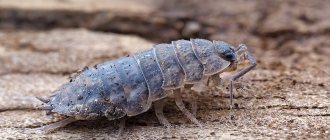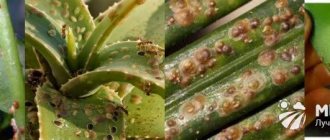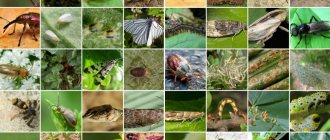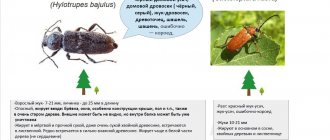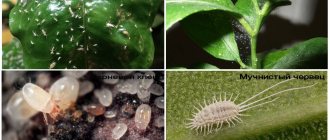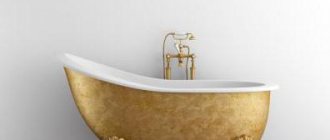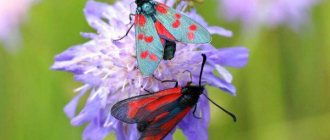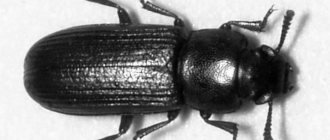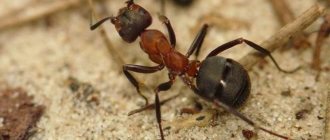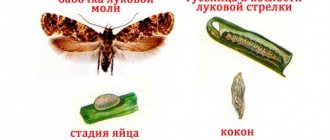In a person’s home there are a huge number of species of living creatures, both harmful and harmless. Often people encounter wood lice, which have a rather unpleasant appearance. Many people think that wood lice are insects, but in fact these living creatures are a genus of crustaceans.
Some sources claim that woodlice are harmful living creatures, although in fact this is not the case. Despite the fact that they are often found in a person’s home, they do not cause any harm, except that they frighten household members with their unpleasant appearance. When woodlice appear in your home, you should immediately pay attention to changes in the microclimate, since they prefer damp places.
What are woodlice? This will be discussed in this article.
Feature of woodlice
There is practically no harm from woodlice, except that they move around the home at night and look quite unpleasant. As a rule, they move in search of more humid places in order to constantly replenish their body with moisture. If the place is too humid, then these crustaceans begin to look for less humid places. In other words, they are constantly looking for more comfortable places.
Interesting fact! At first glance, these creatures are quite slow, but in fact they are able to rise from the basement to the seventh floor in one night.
When they live in nature, they do not touch healthy plants, as they are more attracted to plants that are decomposing. Because of this feature, woodlice are often found in greenhouses and greenhouses, but even in such conditions they do not cause any harm. These living creatures are irreplaceable in compost heaps, as well as in the leaf litter of broad-leaved forests. With the help of such “insects” it is possible to quickly process dead and decaying plants. They are also able to eat fungal spores that appear on the leaves of various plants, which prevents further infection.
It is important to know! These living beings play a very important role in the speed of processes that accompany the natural cycle. Therefore, they accelerate the process of decomposition of organic matter and enrichment of the soil with nutritional components.
More about Porcellio scaber
We invite you to familiarize yourself in more detail with the type of woodlice that is found in our apartments. The species Porcellio scaber is a species of European woodlice that is found everywhere, almost anywhere on land on our planet. It is found throughout Central and Western Europe, North America, South Africa, Australia and, of course, in our country. Such a wide distribution of the species occurred mainly due to human activity.
Woodlice can grow up to 20mm long. It is generally gray in color with some shades of purple on its upper dorsal region and paler, almost white, on its lower dorsal region.
Depending on environmental conditions, primarily temperature, brown, blue and even yellow or pinkish shades of woodlice body color may occur. As noted, this species lives in a wide variety of habitats that contain reasonably high levels of humidity, but it is worth noting that it is less dependent on water than other species.
Who are woodlice?
There are several types of woodlice, some of which can live in water, while others can live on land. The lifestyle of any species depends on one feature - the availability of the required amount of fluid. Due to this feature, these living creatures were called woodlice.
Important fact! In their homes, people encounter one species - Porellioscaber. This species has another name - woodlice.
Not so long ago it was believed that woodlice were not adapted to life on land, but as a result of research it was found that these crustaceans can quickly adapt to living conditions on land. As a result of complex physiological processes, they manage to control the level of moisture in their body. As a result of the formation of the lungs, as well as the conducting capillary system, it becomes possible to remove nitrogenous waste while losing a minimal amount of moisture.
Surprisingly, they were able to survive in the dry conditions of Israel, as well as in the north of the African continent and in the salty waters of Australia, although it is believed that their livelihoods without fresh or moderate salt water are almost impossible.
Basically, all types of woodlice are included in the diet of many species of lizards and toads. Birds do not eat woodlice because they give off nitrogen, which is very unpleasant for birds. At the same time, the spider of the genus “Dysdera” is considered the only predator that preys exclusively on woodlice.
Woodlice in an apartment - why is this insect dangerous?
Prevention methods
Follow basic hygiene rules to prevent pests from entering your home:
- Try to keep the rooms dry at all times. Use air conditioners and dehumidifiers for this.
- Take out the trash can as soon as it is full.
- Make sure that indoor plants are not over-watered and that there is no water or soil particles left in the trays.
- Monitor the condition of plumbing fixtures and repair leaks in a timely manner.
- Try to dry things on the balcony or street.
- Seal cracks in walls or floors.
- Clean well in hard-to-reach and dark corners of the premises.
Woodlouse-pig: description
Because of its unpleasant appearance, this living creature is on a par with many insects that are equally unpleasant, although many of them pose a certain danger to humans. Despite the fact that woodlice is a member of the crustacean family, it is still more convenient to call them insects. Woodlice is found on almost all continents. Moreover, the most interesting thing is that they owe this to human life.
This “insect” grows up to 2 cm in length. The upper part is darker and the lower part is lighter, almost white.
Interesting to know! The body color of the woodlice depends on the nature of the environment. Depending on the temperature, the color of insects can be brown, yellow, pink or blue.
Woodlouse prefers to live in humid conditions, although it is not as dependent on humidity conditions as other species.
Body structure
The body structure of the woodlice is quite simple: the head of the woodlice consists of 3 petals, on which 2 antennas are located, as well as compound eyes. The soft tissues are covered with an exoskeleton consisting of segments. The presence of such a “shell” allows you to protect soft tissues from external negative influences. Compared to other crustaceans, woodlice lack waxy cuticles.
Woodlice also have respiratory organs, which are located in the area of paired plates behind the thoracic legs. They are formed in the form of an internal plate, representing a type of gills, penetrated by numerous blood vessels. They are covered by the branches of the abdominal legs, on which a certain amount of moisture is stored.
It is not so difficult to distinguish woodlice from other types of insects if you pay attention to the number of legs: woodlice have 7 pairs of legs, although most insects have only 3 pairs. Their relatives, crayfish, have 8 pairs of legs, although they use only 5 pairs for movement, and the remaining 3 pairs are involved in eating.
Behavior
All movements of woodlice are associated with reflexes, which are aimed at ensuring that the insect can find a comfortable place for itself. It is enough to conduct an experiment to determine the behavior of this representative of crustaceans. If she is placed in a warm and dry place, she begins to move quite actively, while she looks for a way to get away from this uncomfortable place for her. If you place it in a damp, dark and cool place, the insect slows down its movements and this is not surprising.
What do woodlice eat?
While in a human home, woodlice feed on a wide variety of foods. Since there is no decaying organic matter here, their diet includes dirt found in the corners of the room, soggy pieces of paper, pieces of dead human skin, etc. In other words, the insect will not remain here without food. If a person’s home is kept perfectly clean, then they can settle in flowerpots with fresh flowers, although this is not at all scary, since they are not able to cause damage to them. If they do not find food for themselves, they will simply disappear from the apartment in an unknown direction.
As a rule, there are not so many woodlice in the house, and not so many nutritional components are needed to feed them. In addition, they are not interested in living food.
Reproduction method
For woodlice to reproduce, one condition is necessary: the presence of both female and male individuals.
Interesting to know! The female has a pair of genital openings, into which the male takes turns placing his seed.
At the same time, the reproduction process has its own characteristics. Despite the fact that females and males are able to reproduce at any time of the year, the male has to wait until the next moult for the genital openings to open. In this case, the male is next to the female and waits for the molting process. During the molting process, he helps the female get rid of scales and only then begins the fertilization process.
Fertilized eggs are in a special chamber with liquid, and woodlice larvae are located in a special brood sac. Young individuals emerge from it after full maturation.
After birth, before becoming a sexually mature individual, young larvae go through several stages of molting. Juveniles differ little from adults in appearance, so when you look at a larva, you can immediately imagine adult woodlice.
The lifespan of woodlice depends on living conditions and can be several days or several months.
Important point! The back part of woodlice molts first, and the duration of the molt is several days. The discarded shell particles are eaten by insects.
How does it reproduce?
When the crustaceans reach normal conditions for procreation, and this happens mainly in April and May, they lay eggs. This process mainly takes place at night.
- When a male meets a sensitive female, he climbs onto her back and “drums” on her with his front paws and at the same time “licks” her head with his mouthparts.
- During movement, the male does not leave the female, transferring his seed to one of several genital openings of the female.
- Then he moves to the other side and continues the process into the other genital opening.
- During the breeding season, reproductive females create what is called a "brood pouch", somewhat similar to a cockroach's brood pouch, consisting of overlapping leaf-like structures known as "ostegites". Fertilized eggs pass into this fluid-filled chamber, and after hatching, the young crawl out of the brood pouch when fully developed.
Danger to humans
According to some statements, woodlice bite, although in fact they are simply physically unable to do so. The fact is that the oral apparatus is designed to process soft food components. If there is no food, and they have to eat the living tissues of some plants, then they manage to do this with great difficulty. Scientists today know a lot about these crustaceans. The main thing is that they do not bite or attack humans. In addition, they are not carriers of dangerous infections, compared to many other insects. In this regard, only one conclusion suggests itself: woodlice do not pose any danger to humans. It should be noted that these living beings are not dangerous not only to humans, but also to other living beings.
The only problem is their unpleasant appearance, which greatly irritates household members. Children who know little about them may be especially afraid of them, although many adults cannot please others with their deep knowledge. Therefore, the main task is to inform a wide range of readers about the benefits and dangers of woodlice. Before you start fighting insects in your home, you need to find out how harmful this insect is.
What does it eat?
These creatures love to enjoy a variety of delicacies for them. They prefer to eat rot and already dead plants, but can also eat living ones.
REFERENCE! In addition, they prefer leaves or other organic remains. Also, do not neglect to eat dust and mucus on the walls.
Read about what woodlice eat here.
Traditional methods of fighting insects
In addition to all the drugs that can be used in the fight against woodlice, there are some methods that have been tested more than once.
Such methods allow you to quickly and safely remove unwanted inhabitants.
Boric acid
The action of the acid allows you to destroy the pest's shell and lead to blocking its movement, due to which the woodlice die. Can be used both in dry and liquid form.
The use of powder allows the crystals to stick to the legs and move to areas of accumulation. To eliminate wood lice, it is necessary to distribute the powder in places of high humidity.
You can also prepare a solution in a ratio of 10g:0.5 water. Spray the resulting solution in places where parasites accumulate. To increase the result obtained, it is recommended to add a small amount of acid to the water while washing the floor.
Dry kvass
Used for small pest infestations. To use, you need to pour half a glass of kvass with 0.5 liters of boiling water. Let it brew, then strain the liquid and spray it in places where insects appear. Close the room and leave for several hours, then rinse the floor with chlorine.
A mixture of red pepper, soda and tobacco
To eliminate pests in large quantities, you need to mix 100 grams of tobacco, 10 grams of pepper and 2 tablespoons of soda. Pour the mixture with a glass of hot water and leave for 3 hours. Spray the resulting composition in insect habitats. Most often, one application is enough for woodlice to leave the room.
Salt
The use of salt allows you to disrupt the structure of the pest’s protective shell and destroy it. Regular kitchen salt is used, which must be scattered in places where insects accumulate. Check and update tracks regularly.
Birch branches
This method is used only in cases where parasites live in a specific place. To eliminate insects, it is necessary to moisten birch branches in water and place them in places where wood lice accumulate. In the morning, the branches must be doused with boiling water and the insects should be shaken off.
Quicklime
It is necessary to use quicklime, which is scattered in large quantities on the floor and left for several days. Suitable for basements where insects are found in large numbers.
Professional disinfection
To carry out professional removal of wood lice, you must contact the sanitary service, which will treat the premises and eliminate not only the insects, but also their eggs.
Also, many organizations use special barriers that block the appearance of fleas and woodlice for a long time.
Let's celebrate! The room is treated with a special fog, which quickly eliminates infection and parasites and does not harm human health. After disinfection, a person can observe the result of the procedure in a short time.
